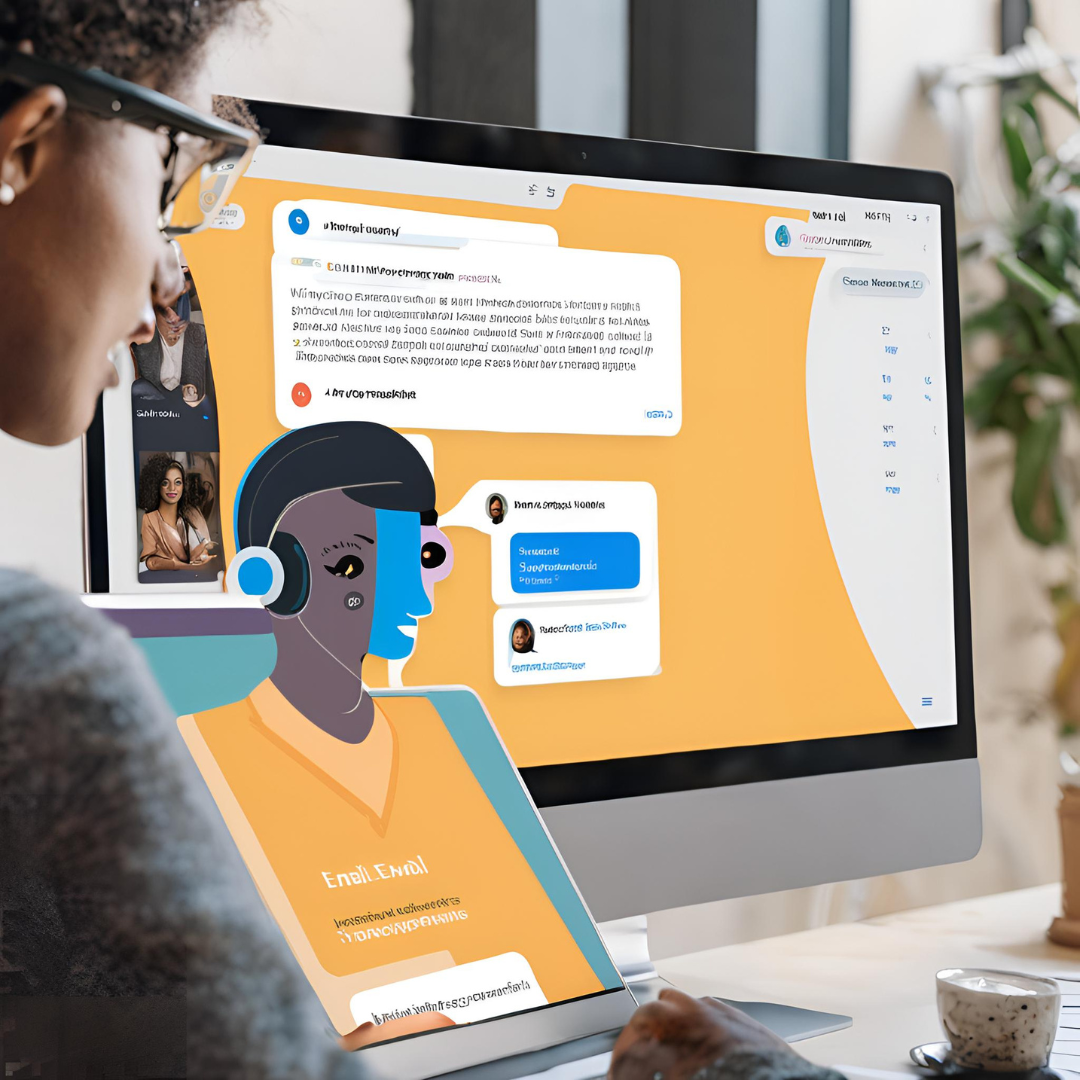Today's consumers are inundated with multiple marketing messages every day, so it's more important than ever for firms to stand out. Lower engagement rates are a result of traditional marketing techniques being met with disinterest frequently. In order to counter this, companies are using email marketing that is hyper-personalized—a technique that sends extremely relevant material based on user preferences and behaviors—in growing numbers. Beyond simple customization, hyper-personalization transforms the way organizations engage with their audience by leveraging data-driven insights to craft memorable, customized experiences.
The relevance of hyper-personalization, how it varies from standard personalization, the technologies enabling it, and best practices for putting into practice successful hyper-personalized email marketing campaigns will all be covered in this blog.
What is Hyper-Personalization?
Hyper-personalization is a cutting-edge marketing tactic that uses data analytics and current information to send clients offers and communications that are specifically tailored to them. Hyper-personalization aims to engage customers more deeply by taking into account their preferences, habits, and interactions across many channels, as opposed to simple personalization, which can comprise using a recipient's name or previous purchase history.
A hyper-personalized email could, for instance, examine a recipient's browsing habits, location, current trends, and even social media interactions to create a message that is specifically catered to them, whereas a standard personalized email might suggest products based on past purchases. Encouraging consumer involvement and conversions through a sense of worth and understanding is the aim.
Real-World Examples of Hyper-Personalization
Several brands have effectively implemented hyper-personalization in their email marketing strategies, showcasing its potential for improving engagement and driving sales.
-
Amazon: The massive internet retailer is a hyper-personalization expert. Amazon provides highly personalized product recommendations in its targeted emails to customers by examining their browser history, purchasing behavior, and wish lists. Their sales have increased as a result of this strategy, and customers have also become more loyal since they believe the brand knows what they want.
-
Spotify:Spotify, which is well-known for providing an enjoyable user experience, uses hyper-personalization in its "Spotify Wrapped" campaign, which provides a summary of subscribers' listening patterns for the previous year. By offering information about the user's preferred songs, musicians, and genres, the email creates a shareable experience that motivates people to share their unique musical journeys on social media.
-
Netflix: Based on users' viewing choices, viewing history, and ratings, Netflix employs hyper-personalization to make show and movie recommendations. They personalize their email releases to each user according on their interests, which has been shown to improve user engagement and retention.
The Importance of Data in Hyper-Personalization
Data is at the heart of hyper-personalization. To create truly personalized experiences, businesses must collect and analyze data from various sources, including:
-
Website Behavior: Future email content can be improved by knowing how consumers engage with your website, including the sites they visit, how long they spend on each page, and the products they view.
-
Email Engagement: Customer preferences can be gained by monitoring which emails are opened, which links are clicked, and the total engagement rates.
-
Social Media Activity: Email content and marketing can be informed by trends and interests found through tracking client interactions on social media platforms.
-
Demographic Information: Gathering information on gender, age, and geography can help segment the audience for more focused advertising.
The Role of First-Party Data
First-party data—information obtained directly from customers—must be prioritized by brands in an era where worries about data privacy are growing. Since first-party data reflects the unique interests and habits of individual customers, it is more dependable and usually produces superior customized results.
Additionally, gathering first-party data increases consumer trust. Customers want brands to use their information in an ethical and responsible manner when they voluntarily share it with them. Brands may cultivate enduring relationships with their audience by providing useful experiences in exchange for transparency regarding their data gathering procedures.
The Technologies Behind Hyper-Personalization
In order to provide customized email content, hyper-personalization depends on cutting-edge technology that evaluate enormous volumes of data. Among the important technologies are:
1. Artificial Intelligence (AI) and Machine Learning (ML)
Large-scale dataset processing and the detection of trends in consumer behavior depend heavily on AI and ML. With the use of these technologies, marketers may forecast future behavior and conduct large-scale data analysis. AI, for example, can assist in determining which things a customer is likely to buy next based on their browsing history and past purchases.
AI can also automate the process of email content optimization. AI can identify the most effective combinations for capturing the attention of particular audience groups by experimenting with various subject lines, pictures, and calls to action (CTAs). This ensures that emails are consistently entertaining and relevant.
2. Predictive Analytics
Utilizing past data, predictive analytics makes predictions about future actions. Businesses can use it to predict consumer behavior in email marketing, such as when a client is likely to make a purchase or when they could churn. Brands may re-engage at-risk customers or encourage purchases from ready-to-buy customers by leveraging these trends to offer timely, targeted messaging.
3. Real-Time Data Processing
Hyper-personalization requires real-time data processing capabilities. Brands can respond quickly to the choices and actions of their customers thanks to real-time data. Real-time processing, for instance, allows the brand to send an email reminder instantly to customers who leave their shopping cart empty, thereby boosting the likelihood of conversion.
4. Dynamic Content
Email features that adapt to the recipient's preferences and actions are referred to as dynamic content. For example, an email could suggest a different product depending on the recipient's browsing or buying history. Brands may make sure that every receiver receives pertinent information that is customized just for them by implementing dynamic content.
5. Customer Data Platforms (CDPs)
A full view of each individual customer encounter is provided by CDPs, which combine data from several sources into a single customer profile. Marketers can quickly access and evaluate consumer data by utilizing CDPs, which gives them the ability to develop highly personalized and targeted email campaigns.
The Advantages of Hyper-Personalization
Implementing hyper-personalization in email marketing offers numerous benefits for brands and their customers:
1. Improved Customer Engagement
Customers are more likely to open, read, and engage with emails that are customized to their interests and actions. Click-through and conversion rates can rise in tandem with higher engagement rates.
2. Increased Conversion Rates
Increased conversion rates can be attained by sending recipients personalized emails that speak to them. Businesses can drive more purchases by promoting products that correspond with the interests of their customers. Compared to non-personalized emails, personalized emails can result in transaction rates that are up to six times higher, according to research.
3. Enhanced Customer Loyalty
Brands may enhance their consumer relationships by offering tailored experiences. Consumer loyalty and content engagement are more likely to persist when they see a company as being genuine and understanding.
4. Reduced Churn Rates
Businesses may identify at-risk clients and promptly offer re-engagement messages by utilizing hyper-personalization. Brands can successfully lower attrition rates and increase client retention by providing tailored incentives or addressing certain pain areas.
5. Efficient Use of Marketing Resources
Marketers can concentrate their efforts on sending highly relevant emails to recipients who are most likely to interact with them thanks to hyper-personalization. A higher return on investment (ROI) and more effective use of marketing resources are the results of this strategic approach.
Conclusion
The future of email marketing lies in hyper-personalization, which gives companies the chance to provide timely, relevant, and customized information that speaks to each receiver personally. Email marketing that increase engagement, conversions, and loyalty can be developed by businesses by utilizing AI, machine learning, predictive analytics, and real-time data processing.
Hyper-personalization will be crucial for firms trying to stand out in a crowded digital market as consumer expectations continue to change. By adopting this strategy, companies may engage with their clients more deeply and establish enduring bonds that promote long-term success.




Leave a Reply